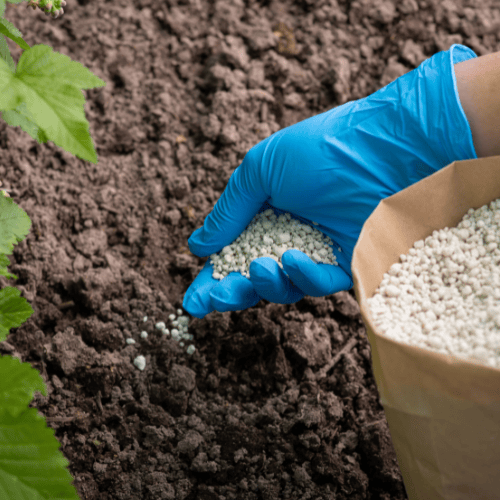
Chinch Bugs vs. Sod Webworms: Spotting the Difference in Your Florida Lawn
Whether you’re a new homeowner in Florida or a long-time resident, you already know that conditions in the Sunshine State…

As spring breathes new life into the world, it’s the perfect time to give your warm season grass the nourishment it needs to thrive throughout the upcoming months. Fertilizing your lawn in spring sets the stage for lush greenery, healthy root systems, and enhanced resilience against the challenges of the growing season. Here’s a guide to mastering the art of fertilization for your warm season grass this spring.
Understanding Nutrient Needs: Before diving into fertilization, it’s essential to understand the specific nutrient requirements of your warm season grass. You can do this by getting your soil tested. Soil testing will show you what nutrients your soil needs, how much organic matter you have, and more. Reach out to us if you would like us to sample and test your soil!
Timing Is Key: Timing plays a crucial role in fertilizing warm season grasses. Aim to apply fertilizer when the grass is actively growing but before the peak of summer heat sets in. In most regions, this translates to early to mid-spring, typically when soil temperatures reach around 55 to 60 degrees Fahrenheit. Applying fertilizer too early may promote excessive top growth at the expense of root development, while late applications can stress the grass during periods of high heat.
Application Techniques: When applying fertilizer, ensure even coverage across your lawn to promote uniform growth. Use a broadcast spreader or a handheld spreader for smaller areas, and adjust the spreader settings according to the manufacturer’s recommendations to avoid over-application. Water your lawn after fertilizing to help the nutrients penetrate the soil and reach the grass roots.
Choosing the Right Formula: Select a fertilizer specifically formulated for warm season grasses and labeled for spring application. Look for a balanced N-P-K ratio (nitrogen, phosphorus, and potassium) with a higher nitrogen content to promote healthy leaf growth. Slow-release fertilizers are ideal for providing a steady supply of nutrients over an extended period, reducing the risk of leaching and runoff.
Environmental Considerations: Be mindful of environmental factors when fertilizing your lawn. Avoid fertilizing before heavy rain or irrigation to prevent nutrient runoff into waterways. Additionally, follow local regulations regarding fertilizer use to minimize the environmental impact and ensure the health of surrounding ecosystems.
By following these guidelines for fertilizing your warm season grass in spring, you’ll lay the foundation for a vibrant and resilient lawn that will be the pride of your landscape throughout the season and beyond. So, grab your fertilizer spreader and get ready to nurture your lawn to new heights of green perfection this spring!